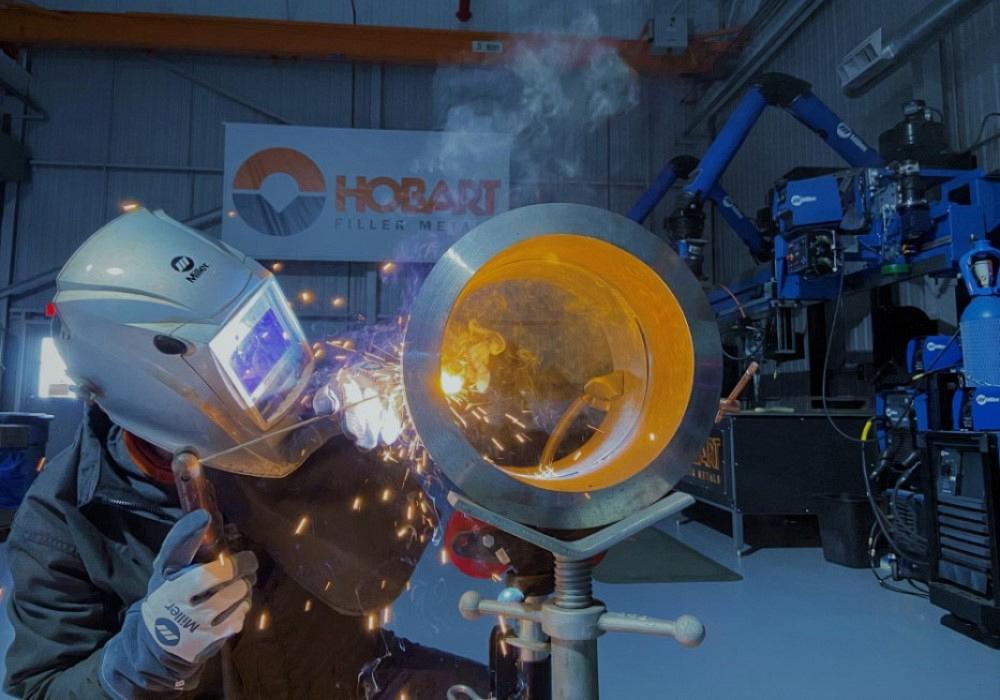Comprehending the Causes and Solutions for Undercut Welding in Steel Construction Procedures
In the realm of metal construction processes, the incident of undercut welding positions a considerable difficulty that demands an extensive understanding of its causes and practical services. The elaborate interplay of various factors during welding procedures can bring about this unwanted sensation, affecting the structural integrity and overall top quality of the bonded joints - Preventing weld undercut. By exploring the root causes of undercut welding and exploring reliable therapeutic procedures, producers can elevate the standard of their handiwork and make sure the production of flawless steel elements
Common Reasons For Undercut Welding
Often ignored in steel manufacture, undercut welding occurs due to different aspects that require thorough focus and knowledge to be successfully minimized. In addition, inappropriate welding strategies, such as using the incorrect welding angle or take a trip rate, can additionally add to undercut formation. The selection of welding specifications, such as voltage, present, and cable feed rate, plays a substantial duty in the event of undercut welding.
Influence of Incorrect Welding Parameters
Inaccurate welding parameters can significantly endanger the integrity and quality of welded joints in steel manufacture procedures. The effect of inaccurate welding parameters manifests in various means, bring about architectural weaknesses and problems in the welded parts. One essential facet impacted by improper welding parameters is the penetration depth of the weld. Insufficient heat input due to low welding currents or exceedingly high traveling rates can lead to inadequate blend in between the base metals, resulting in insufficient joint infiltration and compromised bonds. Alternatively, too much warmth input triggered by high welding currents or slow-moving travel speeds can bring about burn-through and too much reinforcement, creating a weak and unstable weld framework. Furthermore, incorrect criteria such as incorrect voltage setups or inaccurate electrode angles can add to irregular weld bead accounts, lack of blend, and enhanced opportunities of flaws like undercutting. As a result, precise focus to welding parameters is extremely important to guarantee the manufacturing of premium welds with the wanted mechanical buildings and structural honesty.
Effect of Improper Torch Angle
Inappropriate torch angle in welding operations can significantly affect the high quality and honesty of the final weld joints in steel manufacture procedures. Undercutting is a typical welding defect where a groove creates along the weld toe, deteriorating the joint and jeopardizing its structural integrity.
A torch angle that is as well steep can lead to inadequate penetration, insufficient fusion, and raised spatter. On the various other hand, a torch angle that is too superficial can result in excessive penetration, burn-through, and distortion of the base material. Preventing weld undercut. Proper lantern angle is necessary for making sure consistent weld quality, toughness, and appearance
To stop damaging and various other problems brought on by inappropriate torch angles, welders must be educated to maintain the proper torch angle throughout the welding procedure. Routine monitoring and change of torch angles throughout welding can help attain sound welds with marginal flaws.
Role of Inadequate Welding Methods
One more aspect of inadequate welding techniques is improper weld prep work. Poor cleansing of the base steels, inaccurate joint style, or insufficient edge preparation can all add to damage welding. In addition, poor securing gas protection or utilizing the wrong sort of gas can cause insufficient combination and the development of undercut problems.
To address the duty of insufficient welding techniques in steel manufacture processes, it is important to provide thorough training for welders. Correct education on welding parameters, joint prep work, and protecting gas selection can aid avoid undercut welding and ensure high-quality welds in steel fabrication tasks.
Efficient Solutions for Undercut Welding
Dealing with undercut welding in metal manufacture needs implementing efficient services to boost weld high quality and architectural stability. Among the main solutions to battle undercut is to change welding parameters such as voltage, present, and travel rate to make sure proper warm input and fusion. By fine-tuning these setups, welders can protect against too much melting of the base steel and filler material, minimizing the chance of undercut formation.
In addition, proper joint prep work is essential in protecting against undercut. Guaranteeing tidy base metal surfaces without impurities and utilizing the proper bevel angle can help promote much better weld infiltration and minimize the risk of undercut - Preventing weld undercut. Utilizing appropriate welding strategies, such as oscillating the torch or weaving, can likewise assist in distributing heat uniformly and filling up the weld joint adequately, reducing the opportunity of undercut flaws
In addition, selecting the appropriate welding consumables, including electrodes and filler metals, is necessary in minimizing undercut. Using materials with suitable chemical structures and mechanical buildings can add to important link achieving sound welds with minimal undercut. Regular inspection and quality assurance steps ought to likewise be executed to discover and attend to undercut problems immediately, making sure the general stability of produced metal components.

Conclusion
In conclusion, recognizing the reasons and options for undercut welding in steel construction processes is crucial for achieving high-quality welds. By resolving usual reasons such as incorrect welding parameters, inappropriate lantern angle, and insufficient welding techniques, welders can protect against damaging and make sure strong, durable welds. It is necessary to focus on these aspects and try here execute effective remedies to enhance the overall welding procedure and end product high quality.
